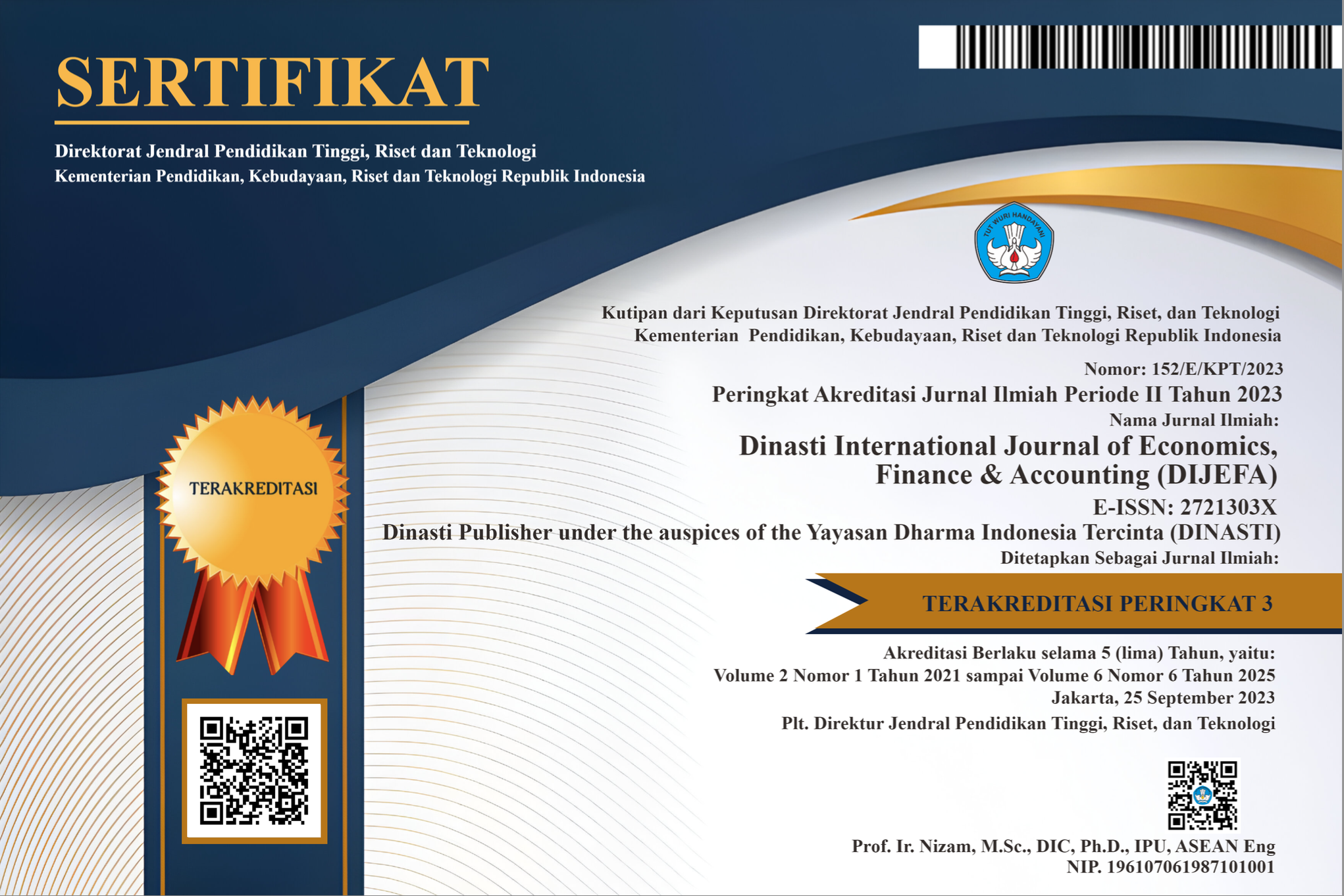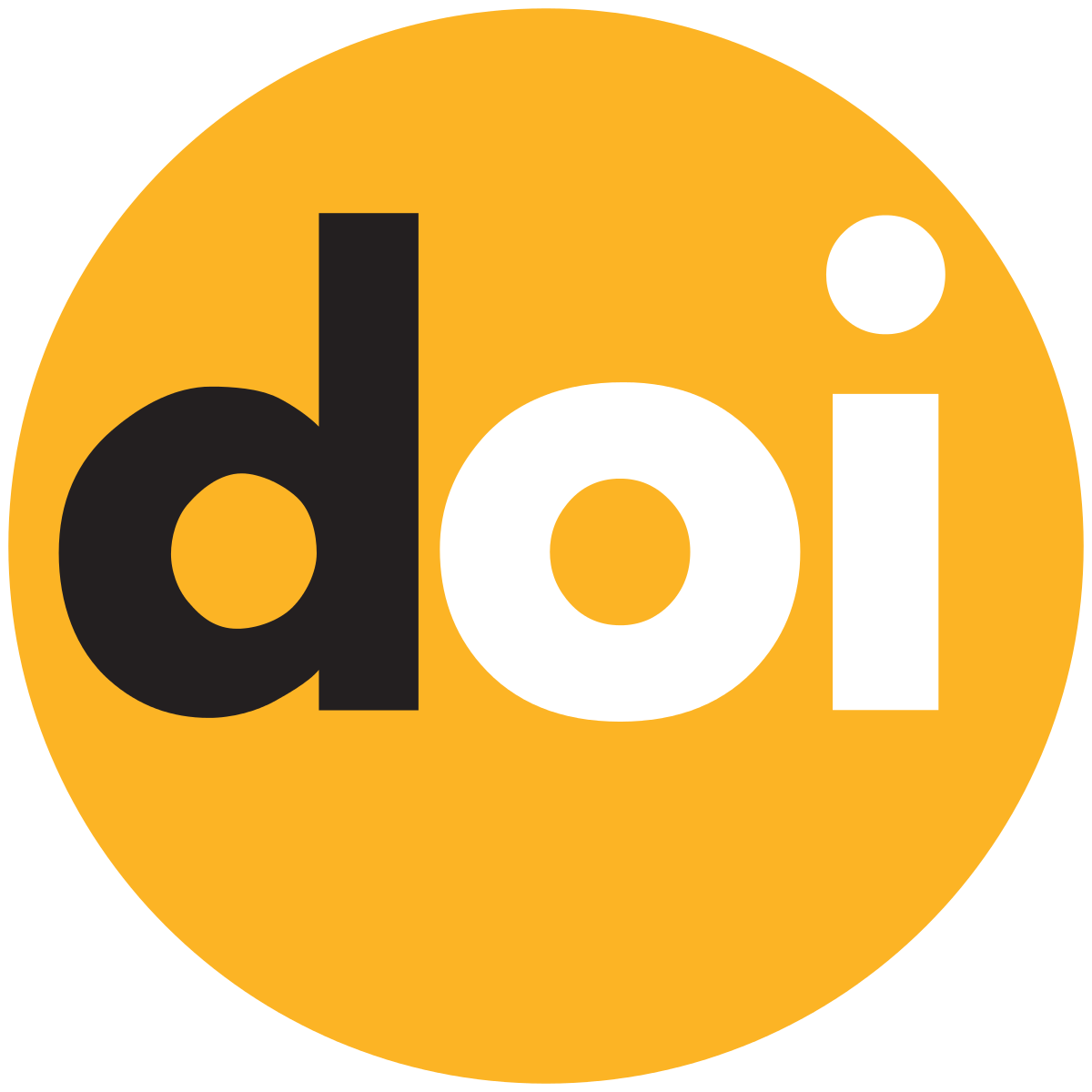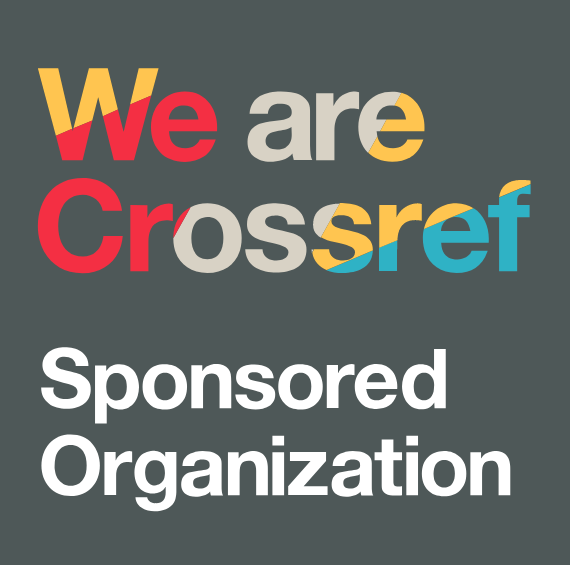Analysis of Export Barriers of Honey Pineapple Commodity in Purbalingga Regency
DOI:
https://doi.org/10.38035/dijefa.v5i5.3479Keywords:
Export Barriers, Honey Pineapple, MSME Honey PineappleAbstract
Pineapple production is increasing globally due to the demand for the fruit in the food processing industry to the manufacture of snacks. Purbalingga Regency has not maximized this potential because some MSMEs have stopped and have never exported. This study aims to determine the factors inhibiting the export of honey pineapple commodities inPurbalingga Regency. The technique used was unstructured interviews with 6 resource persons, namely Nanas-qu, Almeidah, the Department of Industry and Trade (Disperindag), the Department of Cooperatives and SMEs (Diskopukm), the FTA Support Center, and export practitioners. The results showed that Honey pineapple MSMEs in Purbalingga Regency struggle to set competitive export prices due to inability to purchase canning machines, reliance on external services, high export costs, and limited negotiation abilities, resulting in low product competitiveness and high selling prices. MSMEs in Purbalingga Regency rely significantly on their own funds for canning machinery, which is insufficient to cover operating expenses. Financial recording constraints limit access to working capital credit programs. Sufficient operating capital is required for operations and annually certificate audits when exporting honey pineapple. Optimal cooperation between pineapple stakeholders and district governments must be done to increase Indonesian pineapple exports to global markets.
References
Badan Pusat Statistik Provinsi Jambi. (2023). Sensus Pertanian 2023, Mencatat Pertanian Indonesia Untuk Kedaulatan Pangan dan Kesejahteraan Petani. https://jambi.bps.go.id/news/2022/08/11/243/sensus-pertanian-2023--mencatat-pertanian-indonesia-untuk-kedaulatan-pangan-dan-kesejahteraan-petani.html#:~:text=Pada%202023%20nanti%2C%20Sensus%20Pertanian,Perikanan%2C%20Kehutanan%20dan%20Jasa%20Pertanian
Badan Pusat Statistik Provinsi Jawa Tengah. (2022). [Seri 2010] Distribusi Persentase PDRB Menurut Lapangan Usaha Kabupaten Purbalingga (Persen), 2020-2022. https://jateng.bps.go.id/indicator/157/1354/1/-seri-2010-distribusi-persentase-pdrb-menurut-lapangan-usaha-kabupaten-purbalingga.html
Baliyan, K., Sanjeev, K., & Chandra, M. (2022). Constraints in Mango Export from India. Indian Journal of Ecology, 483–490. https://doi.org/10.55362/ije/2022/3549
Bisa Pengadaan. (2023, November 13). Berdayakan Puluhan IRT, UMKM Olahan Nanas Ini Raup Omzet Rp 13 Juta/Bulan. https://bisapengadaan.lkpp.go.id/news_detail/194
Central Java Provincial Government. (2021). Agro Industri Kelapa (Food Estate). https://cjip.jatengprov.go.id/peluang-investasi/173
Dinas Pertanian Kabupaten Purbalingga. (2023, January 9). Laporan Akuntabilitas Kinerja Instansi Pemerintah (LKJIP) Tahun 2022. https://sakip.purbalinggakab.go.id/wp-content/uploads/2023/09/LKJIP-DINPERTAN.pdf
Dissanayake, A. K. A., Udari, U. D. R., Kobbekaduwa, H., Research, A., & Institute, T. (2023). Sri Lankan Fruit Exports: Potentials, Barriers and Prospects-economic-journal-cej. Colombo Economic Journal (CEJ), 1, 87–101.
Kaido, B. (2022). Supply Chain and Marketing Problems of Agricultural Commodities: Case Studies of Pineapple and Arabica Coffee in Muaro Jambi and Kerinci Regency, Jambi Province, Indonesia.
Karing’u, K. N., Isaboke, H. N., & Ndirangu, S. N. (2020). Transaction costs and participation in avocado export marketing in Murang’a County, Kenya. Journal of Agribusiness in Developing and Emerging Economies, 11(3), 221–240. https://doi.org/10.1108/JADEE-12-2019-0206
Leonidou, L. C. (2004). An Analysis of the Barriers Hindering Small Business Export Development. In Journal of Small Business Management (Vol. 42, Issue 3).
Mordor Intelligence. (2024). Pineapple Market Size & Share Analysis - Growth Trends & Forecasts (2024 - 2029). https://www.mordorintelligence.com/industry-reports/global-pineapple-market
Morini, C., Polis, M. C. B., da Silva, D., & Junior, E. I. (2021). Export Barriers for SMEs from Emerging Market: A Model of Analysis for Non-Tech Companies. BAR - Brazilian Administration Review, 18(4). https://doi.org/10.1590/1807-7692bar2021200121
Muhamad, N. (2023, June 22). Lampung Jadi Provinsi Penghasil Nanas Terbesar di Indonesia 2022. https://databoks.katadata.co.id/datapublish/2023/06/22/lampung-jadi-provinsi-penghasil-nanas-terbesar-di-indonesia-2022
Muzaki, K. (2020, October 17). Di tengah Pandemi, Olahan Nanas Purbalingga Diekspor ke Arab Saudi Artikel ini telah tayang di TribunJateng.com dengan judul Di tengah Pandemi, Olahan Nanas Purbalingga Diekspor ke Arab Saudi. https://jateng.tribunnews.com/2020/10/17/di-tengah-pandemi-olahan-nanas-purbalingga-diekspor-ke-arab-saudi
Nunan, D., Birks, D. F., & Malhotra, N. K. (2020). Marketing Research Applied Insight. www.pearson.com/uk
Olaitan, O. F., Hubbard, N. J., & Bamford, C. G. (2020). The potential for the participation of Nigeria in global horticulture value chains. International Journal of Emerging Markets, 15(1), 93–110. https://doi.org/10.1108/IJOEM-02-2017-0049
Rizaty, M. A. (2021, March 12). Nanas Jadi Komoditas Buah Unggulan dengan Volume Ekspor Tertinggi. https://databoks.katadata.co.id/datapublish/2021/03/12/nanas-jadi-komoditas-buah-unggulan-dengan-volume-ekspor-tertinggi
Samosir, S. L. (2023, September 17). 7 Negara Potensi Ekspor Nanas Indonesia, Mana Paling Cuan? https://ukmindonesia.id/baca-deskripsi-posts/7-negara-potensi-ekspor-nanas-indonesia-mana-paling-cuan
Shahbandeh, M. (2023, January 6). Leading countries in pineapple production worldwide in 2021. https://www.statista.com/statistics/298517/global-pineapple-production-by-leading-countries/
Tuka Tuku Purbalingga. (2023, September 7). Inkubator Bisnis “Tuka Tuku Purbalingga.” https://sipensi.kemenkopukm.go.id/storage/laporan_14a196e1c5618828d16db8583077612128285948.pdf
Downloads
Published
How to Cite
Issue
Section
License
Copyright (c) 2024 Sekar Ayu Fadillah, Deru R Indika

This work is licensed under a Creative Commons Attribution 4.0 International License.
Authors who publish their manuscripts in this journal agree to the following conditions:
- The copyright on each article belongs to the author(s).
- The author acknowledges that the Dinasti International Journal of Economics, Finance & Accounting (DIJEFA) has the right to be the first to publish with a Creative Commons Attribution 4.0 International license (Attribution 4.0 International (CC BY 4.0).
- Authors can submit articles separately, arrange for the non-exclusive distribution of manuscripts that have been published in this journal into other versions (e.g., sent to the author's institutional repository, publication into books, etc.), by acknowledging that the manuscript has been published for the first time in the Dinasti International Journal of Economics, Finance & Accounting (DIJEFA).


























































